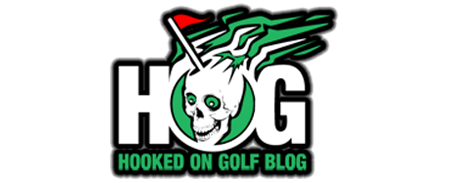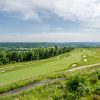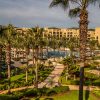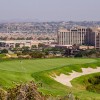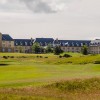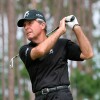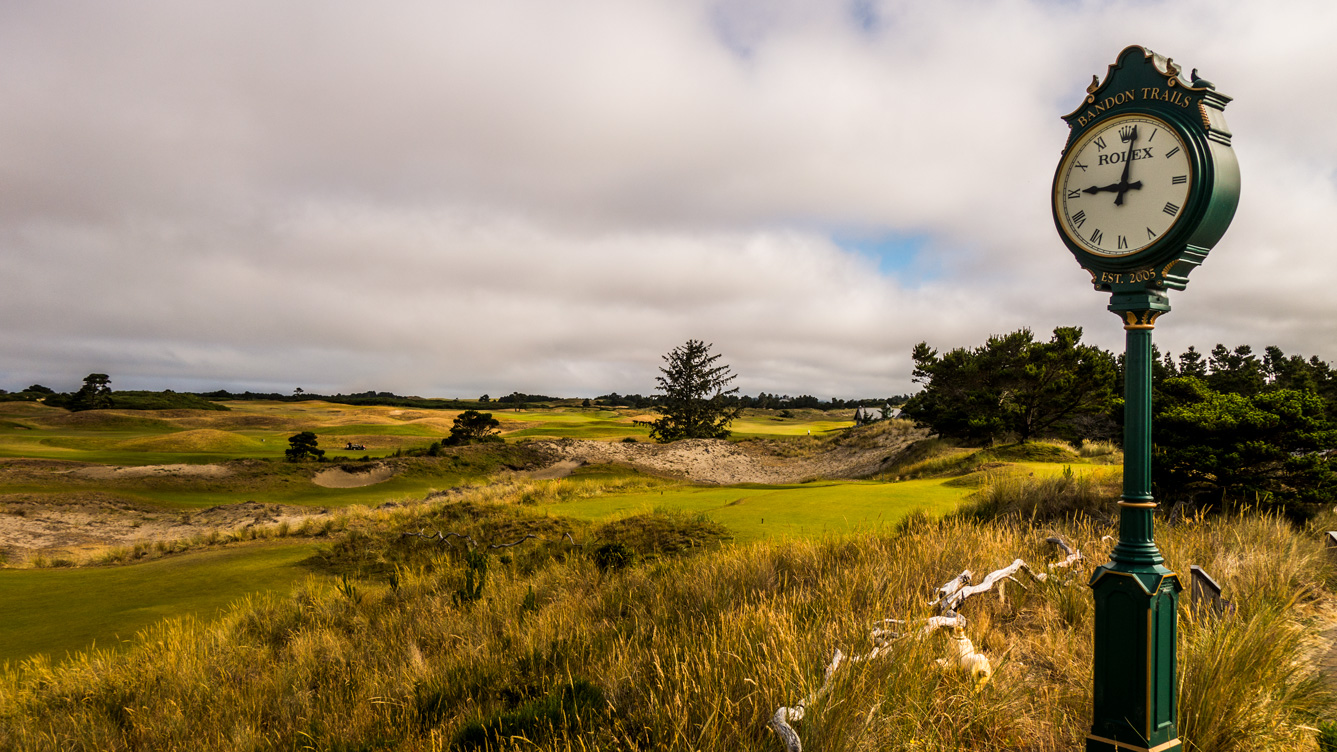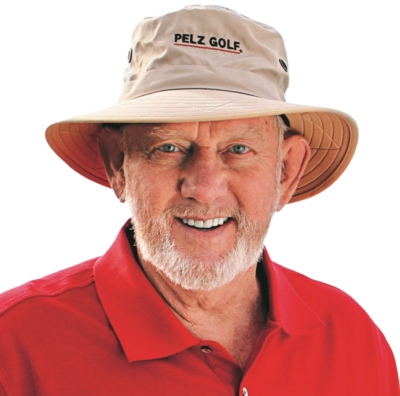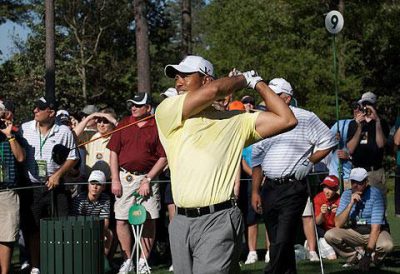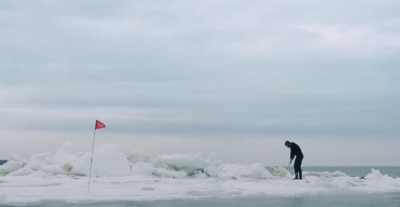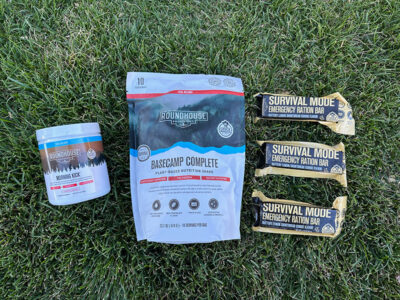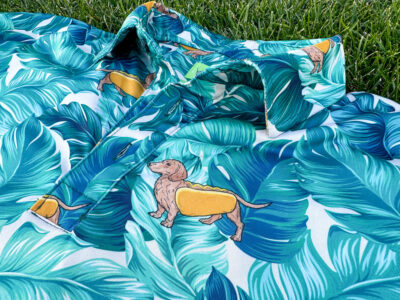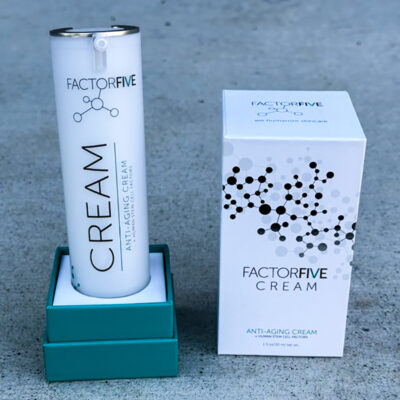2006 PGA State of the Association News Conference
Categories: European Tour • Golf Accessories • Golf Balls • Golf Clubs • Golf Equipment • Golf Media • Miscellaneous • PGA Tour • Web.com Tour
If you’re completely lost golf junkie, here’s the:
January 26, 2006
2006 MERCHANDISE SHOW
PGA STATE OF THE ASSOCIATION
NEWS CONFERENCE
JULIUS MASON: Good morning, everyone. I’m Julius Mason, the senior director of communications and media relations for the PGA of America, and I’d to welcome you to the 53rd PGA Merchandise Show and the PGA State of the Association news conference.
Sitting at the head table from Kiawah Island, South Carolina the president of Kiawah Island Golf Resort and the president of PGA of America, Mr. Roger Warren.
And from Palm Beach Gardens, Florida, the chief executive officer of the PGA of America, Mr. Joe Steranka.
We also have some guests in the audience I’d like to recognize at this time. From Bend, Oregon, where he is the owner of Lost Tracks Golf Club, Mr. Brian Whitcomb in the front row over here. From Ludlow, Vermont where he is the vice president and general manager of Okemo Valley Golf Division and the Okemo Valley Golf Club, the secretary of the PGA of America, Mr. Jim Remy. And from Jacksonville Beach, Florida, the co owner and director of golf at the Golf Club of South Hampton the honorary president of the PGA of America, Mr. M.G. Orender.
Also joining us, I believe, from Reed Expositions, Chet Burchett, president of Reed Expositions, North America. John Lewinski, senior vice president of Reed Expositions; and Ed Several, PGA Golf Exhibitions Vice President and Show Manager. It’s now my pleasure to turn things over to Roger Warren. Roger?
ROGER WARREN: Thank you, Julius. Welcome to the 2006 PGA Merchandise Show. We’re really pleased again to be here again in Orlando for the Merchandise Show and convention. We’re excited about this event this week again. There are a number of new initiatives that we’re also excited about, the participation that we anticipate during this week.
The show still continues to be the meeting place, single largest meeting place of those people who are in the golf industry, and it always lends itself to generating the excitement and the interest of the coming new golf season. It is part of the fabric and tradition of the PGA golf professional to come to the PGA Merchandise Show in Orlando.
And this is my 19th consecutive PGA Merchandise Show, and I think back to my first and all of the things that have changed and the positive changes that have taken place and we’re excited about being here again.
One of the things we’re excited about this week is we’re going to have our first Play Golf America conference on Friday, the opportunity to bring together PGA Golf Professionals and those people who have been actively involved in Play Golf America. The conference will be led by our honorary president, M.G. Orender, who has taken chairmanship of the Play Golf America program and council. It’s an opportunity for people to talk about success, talk about those programs that have worked, why they have worked, how they work and be able to share that with fellow golf professionals to continue the growth of Play Golf America.
We also today initiated our first PGA USA golf equipment hotline, starting at 8:00 this morning. It gave people the opportunity to call in, talk to PGA golf professionals and ask them questions about their equipment. Beyond instruction we understand that equipment plays a key role and vital role in the enjoyment of the game of golf. So as we feel with beginners, we deal with active players and they have questions about equipment, it’s important that they have a resource, not only their own home golf professional; but today people who may not have a home golf professional to call in and be able to talk to a PGA professional on the phone and answer questions about their equipment and what they can do to improve their game. And we’re excited about that as an added feature at the PGA show this year.
This is an exciting year for the PGA of America. It’s our 90th Anniversary, April 10th of 1916. The PGA of America was formed, formed with a mission, two primary goals on our mission, to improve the professional standing of our golf professionals and to grow the game of golf and that mission today continues to be the focus of PGA members around the country and around the world. For our 90th anniversary year, we’re going to have a series of events starting off with an event April 10th in New York to kick off the excitement and talk about PGA members, PGA of America and what they have meant to the game of golf and the past and what they know we will mean to the game of golf in the future. And we are excited about the opportunity to share that with the country this year and talk about PGA members and what they mean to the game of golf.
At this time we’re going to play a video about the 90th Anniversary of the PGA of America.
(Video played.)
That’s the 62nd PSA that you’ll see numerous times this year promoting the 90th Anniversary of the PGA of America.
Certainly one of the highlights in last year in 2005 was the continued growth and success of Play Golf America, an industry supported program to grow participation in the game led by PGA members around the country. It was a great year in 2005. We had more than 556,000 participants in group lessons, and that was up from over 300,000 the previous year.
This year in 2006, we had 12 Play Golf America Days around the country last year. This year we already have playing days scheduled and our goal is to have one playing day in all 41 sections, and the Association is providing financial support for that.
What we know about Play Golf America is that it is a program, supported by the industry and led by PGA golf professionals that is effectively growing participation in golf and getting people who were either in golf before and went away and are now coming back, or beginners, adult beginners who haven’t played before, giving them opportunities to learn the game and play.
Play Golf America also addresses one of the issues that we know was a barrier to people playing golf, and had it to do with the time it takes to play the game. One of the tenets of Play Golf America is to provide alternative activities, times of the day, length of the round, opportunities for people to play that fit their schedule.
The most exciting thing about Play Golf America is that it is truly a grass roots program, and as it should be. Because the effort to grow participation in the game of golf is an individual golf professional and golf facility by golf facility responsibility because in the ends all of us at our facilities will benefit by this growing participation. We are certainly excited about the commitment of our golf professionals to this program.
Free Lesson Month in conjunction with Golf Digest in May last year, we had almost 7,000 PGA golf professionals, an increase in 38 percent over the previous year give a significant number of lessons, the lessons we gave were up 32 percent over the previous year. We know that the program Play Golf America and the leadership of M.G. Orender and under the support of PGA golf professionals is going to have and is having an impact on growing participation in the game of golf, and we’re excited about that.
This year we also have a new program called PGA Free Fitting and Trade Up Month in April. We already have 600 PGA professionals who signed up for it, and again this is a concept to make sure that people who play the game get properly fitted with the equipment that will best serve their needs and help them play the game and enjoy their game better. We know the game is a hard game to play, and we know that is one of the barriers to having people continue to play.
PGA of America’s golf professionals are committed to instruction and making sure people are using the right equipment that we maximize the opportunity for those who come into the game to play and that they have been in the game playing that they enjoy it more, because we know that’s important to the ongoing growth of this game and the participation in the game.
And finally the last thing I’ll talk about is an initiative that we started in 2005 called Performance Trak. PGA Performance Trak is a program PGA of America has put forth for our members as part of an education program to give them the best information that we can to help them understand the matrix of operating their programs, to help them to demonstrate and develop bench manages so they can compare benchmarks with their operation to other similar operations in their regional market to help understand and evaluate performance.
The success of Performance Trak in this year can be represented in the fact that the very first year, basically in six months, we had 2,755 unique facilities across the country reporting their information on a monthly basis. Certainly our goal next year is to double that number. And we see as people begin to understand the value of quality information, valid information on performance statistics that it will help the individual golf professionals owners and operators to be able to benchmark their performance and have accurate information.
Through the PGA members and the programs provided through PGA members, we feel this will also in the future help understand what we have to do to grow financial participation in the industry. We’re proud of the program, we’re proud of the support from PGA members, and it’s another example of an initiative by the PGA of America for PGA members that will help improve the industry and the game, and we see it only growing in the future and we are very happy and excited about the program.
Now it’s my distinct pleasure to introduce, although it’s been now 11 weeks since he’s been in that position, the new CEO of PGA of America, Mr. Joe Steranka.
JOE STERANKA: Thank you, Roger, and it’s good to be in front you as the chief executive officer of the PGA for the first time. Roger mentioned a number of programs that are conducted by the PGA of America through our professionals that serve the game of golf, and I’ll talk for a little bit about the connection between some of the championships and the marketing activities that we do that generate an income to allow us to do world class education, our employment service, our programs like Play Golf America and Performance Trak.
It starts with our major championships. We kick it off with the Senior PGA Championship, which is going to be at Oak Tree Golf Club in Edmond, Oklahoma, which is also the site of the 1988 PGA Championship. Those of you who have been here for a few years know that was our strategy to take the Senior PGA on the road, take it to some old, classic venues and share that with the golfing public. We also extended our agreement with NBC Sports to broadcast the Senior PGA Championship on network television again so that will be on NBC again this year.
And it’s our commitment to really share what we think is one of those events that represents the Hall of Famers that play and represent our sport at a major championship venue.
We then go to our PGA Club Professional Championship, which is going to be played at Turning Stone Golf Club and Casino in Verona, New York. What’s different about the CPC this year is we’re going to expand the field to 312 players, so it’s a much bigger field and then we’ll cut for the weekend. But all four rounds again are going to be televised on the Golf Channel and the Top 20 finishers will go onto play in the PGA Championship at Medinah.
Medinah, we return to the site of that duel with Tiger Woods and Sergio Garcia, and the fact that it’s the final event to select the United States Ryder Cup Team will make Medinah very, very special. It’s a great venue, obviously there have been some golf course changes since we were there back in 1999, so we’re excited to see how that per forms under the pressure cooker that’s the PGA Championship.
Speaking of another event that tightens up the attention of the U.S. players, it’s the Ryder Cup Matches. I can’t think of a better setting than Ireland when we go over there to bring the Cup back. And I can’t think of a better captain that we can have at this particular time than Tom Lehman. We did our part over a year ago when we changed the Ryder Cup points system, so essentially winners on the PGA TOUR this year are getting almost five times the number of points that they got in 2005 and 2004 for winning this year. The major championships, the points are much higher, not quite that differential. But our goal again was to get the hottest playing U.S. players playing the best golf leading into the Ryder Cup. We need to win the Ryder Cup.
And The Matches will be conducted extremely well. America has a love affair with Ireland and the Irish love the Americans. It’s going to be a wonderful setting, a lot of drama, and we’re looking forward to celebrating the return of the Ryder Cup to U.S. soil.
We’ll conclude with the PGA Grand Slam of Golf with the winners of four major championships, and it’s those events that allow us to keep our dues low and keep doing new programs like Performance Trak year in and year out.
Some other things that help generate revenue and promote the brand of the PGA and the PGA golf professionals are sponsorships, so we have got extensions with Hyatt and Srixon and Premiere Golf. We also are welcoming Pukka Headwear into our Retirement Plus Program and Office Max into a new position as the official office products company in the association, and then well, let me talk for a minute about Office Max.
Providing PGA professionals office supplies might seem like a bit of a stretch, but we’ve seen this 250 percent increase in the number of members, PGA of America professionals going into management responsibilities at their facilities. Our current officers: The fact that Roger is the press of one of the major golf resorts; Brian Whitcomb is a proprietor/owner, he has actually built a number of courses himself; Jim Remy is a general manager; M.G., our honorary president, has supervised construction and management and ownership of multiple facilities. I think you’re going to continue to see us provide benefits and sponsorships and licensing agreements that benefit that new group, new breed of PGA professionals that are going into constantly higher positions of influence in the industry.
One of the other things that we do to help grow the brand and drive business for PGA members is our work with PGA Interactive. It was an agreement we struck with Time Warner, the world’s largest media company to basically help us with PGA.COM, but it’s so much more than that. Even though we’re up to 21 million unique visitors to PGA.COM, that number is up 50 percent over last year, probably the biggest benefit are the things that market and connect the consumer with PGA of America professionals.
So we’ve got a Pro Finder search engine that will come out on PGA.COM this year where the golfing public can put in their zip code and search for a tee time, a lesson, a club fitting, junior golf camp, a Play Golf America program; any possible golf experience or service that PGA of America professionals offer is going to be available vie at Internet. We’ll syndicate the Pro Finder search engine to other Websites and we use it right now for example on PlayGolfAmerica.com, and so having the resources of Time Warner. And you see what is happening in the world of entertainment these days with you being able to download your favorite entertainment series onto your iPods, and you’ll see the distribution of PGA of America content, golf instruction and content around our major championships, that will be available to you on your cell phones and your iPods and Video on Demand, in a lot of way, shapes and forms. That’s the new generation of content and how you share it and slice it and dice it and build your brand and become more relevant to your customers.
The final piece that we’re looking at from a marketing standpoint is our work at the PGA Learning Center. It’s a 35 acre golf complex. Many of you I know have been there because I see some familiar faces here in the room, but it’s our laboratory for studying everything there is about golf instruction. And we brought in a new group, Solo 3, to help us the PGA Kinematics Lab. It’s really a start of the art and study of motion and how you define world class golf instruction and club fitting and course management with the study of how your body moves. It’s the final piece that we think is going to continue to perpetuate the PGA of America and our members as the leaders in golf instruction.
So we’ll cap off our year in 2006 with our PGA teaching and coaching summit. It is the PGA Merchandise Show for golf professionals focused on teaching as a career path. It brings together a thousand of our members and fellow PGA professionals from around the world to Port St. Lucie at the PGA Learning Center. So it’s an exciting year, a lot of new things going on for the PGA of America, and a few new things going on for me. But I’m excited about it and happy to take any questions you might have for Roger or I at this time.
JULIUS MASON: Questions for Roger, questions for 11 week old Mr. Steranka.
Q. I’m wondering if you can just elaborate a little bit on the new points process for the Ryder Cup selections, it does seem like it will be a more valid system for identifying players that are playing their best going into the Ryder Cup. How did you formulate the new system?
ROGER WARREN: Well, without getting into all of the specific details because frankly I don’t know all the specific details off the top of my head. I can tell you the concept developed.
We felt a responsibility what we do with the Ryder Cup as an Association every year after the Ryder Cup, because of our responsibilities shared with the European side of the event, we have a responsibility to oversee and be a caretaker of the event, we want to make sure when we look at it, what do we have to do to help it maintain its status. And frankly after losing seven out of the last ten Ryder Cups, we wanted to look at the process and see if there’s something that we can do to make sure we can be successful in the future.
So looking at it and evaluating it, we felt it was important to look at the second year of a Ryder Cup process, the qualifying process, and although we didn’t at that point want to take the first year and have no accumulation of points because we wanted to keep the Ryder Cup in the minds of the players, we did see that it was valuable, determined that it was valuable to weight the points system to the second year of the Ryder Cup process.
And in discussions, frankly, with Tom Lehman, the new captain, as we went and had those discussions with him, he made it clear to us that he thought, having been a successful performer in the Ryder Cup that winning and the experience of winning and the success of winning and surviving the pressure of winning was an important part and an important ingredient in what a team member should have on the Ryder Cup.
So we made sure that winners were going to get points, accumulate points at a level they had not in the past and certainly that then expanded to winners of majors because of the expanded pressure and challenge of a major. So the points for winning a major were put even higher than winning a regular event.
We see that as being an opportunity to take winning and performance and make it the criteria in the second year of the Ryder Cup year and the collection of those points, to bring us to the point that we could feel like we have the strongest team playing the best at the time of the Ryder Cup to participate. And it will be a very interesting process as we watch this year and you can see right now even in the first few events that there have been some moves, significant moves but a couple of players up the list because of their win and the points that they accumulated.
So I think that we will watch this year very carefully, and at the end of this Ryder Cup after we win this one, we’ll know that the choice was right and then we’ll try go forward and make even better decisions as we go forward to enhance the opportunity for the American side of the Ryder Cup to win the Ryder Cup.
Q. For either Roger or Joe, the Ryder Cup has had a bit of a tradition of thinking outside the box for the venues, starting with some places, Kiawah, going to Ireland and Wales on the other side; is that sort of the mantra of this event to explore new fields?
ROGER WARREN: I’ll go first and then let Joe talk. The mantra for the Ryder Cup, when you look at the position the Ryder Cup holds in the world golf, it is the premiere golf event through the history of golf. So the responsibility as a caretaker either on the European side or the American side is to make sure that the venue provides the best opportunity for great players to be tested in a match play situation, as well as provide those people who want to spectate that event to have that opportunity. And as we go forward, I think that what you’ve seen from the PGA of America is a fidelity to that responsibility and making sure that the venues that we go to support the quality of the Ryder Cup and I think we’re proud of those venues.
We look to the venues as we come forward in the United States with Medinah, with Hazeltine, when we come to we’re very proud of Valhalla being a Ryder Cup site. It is a PGA owned property, but we have shown through the PGA Senior Championship and the PGA Championship that it is a championship venue, and we think that the Ryder Cup at Valhalla is going to be a great event.
So I think that we will continue as an Association under future leadership to make sure that the venues for the Ryder Cup in the United States are going to be in line with the stature of the event and will continue to do that?
JOE STERANKA: I’ll speak a little bit about the European side, because it’s a different model in Europe where you have many countries who are making up that European Team.
The European Ryder Cup Committee is taking a look at how you can share the asset of hosting the Ryder Cup with different countries; thus, the fact that they are in Ireland this year and Wales and Scotland, and they are also developing a relationship with those countries to promote golf outside of the Ryder Cup. So each one of those countries is helping underwrite one of the major events on The European Tour, and that helps share golf throughout Europe. I think you’ll see the Ryder Cup in the future go to the Continent again as European golf grows on the Continent.
So it’s a little bit different here. We’re one country and our mission has been to try to move around the country when we can and find great historic venues, and from time to time look at a new venue like a Valhalla when it was new at the time and Whistling Straits that we played in ’04.
We’re not afraid to help define that next generation of those classic courses that people are going to look back and say, you know, where Tiger Woods won that major was pretty special.
Q. Mr. Steranka, could you give us an update on the PGA of America’s plans for San Antonio?
JOE STERANKA: If you call me Joe, yes, I will.
We looked real hard at San Antonio to do a PGA Village similar to the PGA Village in Port St. Lucie that I mentioned is the home of the PGA Learning Center. And after several years just concluded that project wasn’t going to work in San Antonio.
I think since then the PGA TOUR may have come in and is looking at a TPC course there. But we found when we began re exploring the other markets that it would make sense for a western presence and that’s the reason we looked at San Antonio originally was to have a western presence for PGA of America professionals.
Las Vegas had a great opportunity and there’s some synergy with it being the host city for the PGA Fall Expo that is the complement to this show. That project is an amazing project. It’s 43,000 acres straddling a lake in Clark County north of Las Vegas. They are already underway with the first Jack Nicklaus course and there’s a second Nicklaus course and a Nicklaus/Pete Dye collaborative course that will be the first of its kind. And it will have a PGA Learning Center and really represent the PGA of America brands and provide some great employment opportunities for PGA members out there.
Q. Joe or Roger, you mentioned about this new elements in regards to your Internet presence, how do you see that down the road? Is that going to be just a channel for distribution of information, video content and whatnot, or is that going to be a revenue stream?
JOE STERANKA: Thanks for mentioning that. Pro Finder is just the start of that connection between the golf consumer and the PGA of America professional. So we’ve built some e business services; the online Trade In Network that we have so that golfers can take an old club and take it in and get credit for a new purchase. And then PGA professionals can ship that club through the PGA Trade In Network and its liquidated an a PGA co branded site on eBay to sell that equipment. Our golf professionals don’t have any inventory risk of giving that credit for the new product sale in the golf shop.
We’ve also created the PGA Exchange which is a B2B service where members can search catalogs and services from the manufacturers. And we’ve got a PGA Tee Time Network that is just off the ground and growing to help us sell that available inventory. We’ve got a lot of unsold tee time inventory and we’ll use the power of the PGA brand and all of the marketing horsepower that Time Warner can put behind that.
So yes, it’s more than just content. They are actual services and a retail benefit for PGA members in the golf industry.
JULIUS MASON: Questions? Questions twice? Thank you very much, ladies and gentlemen.
